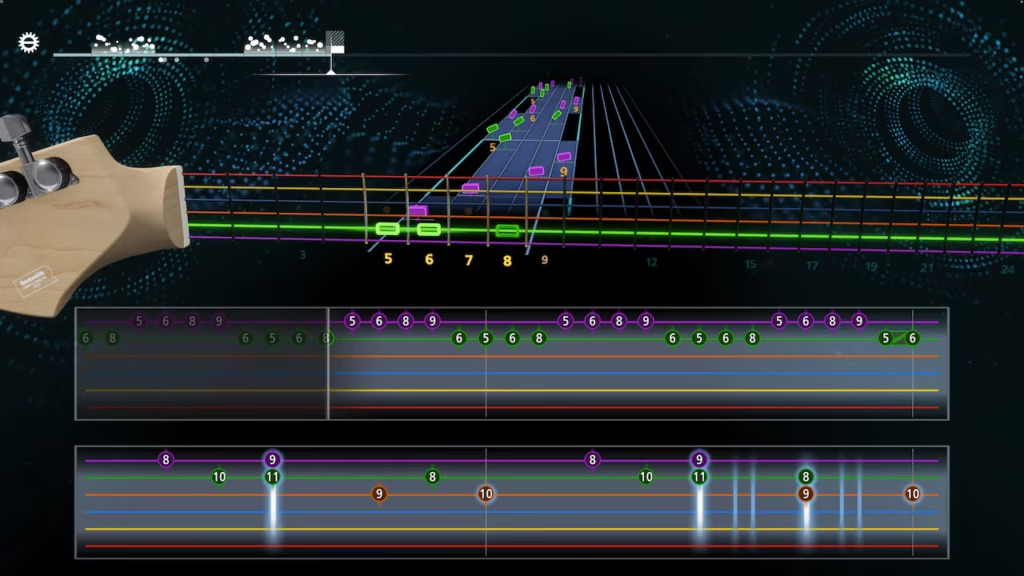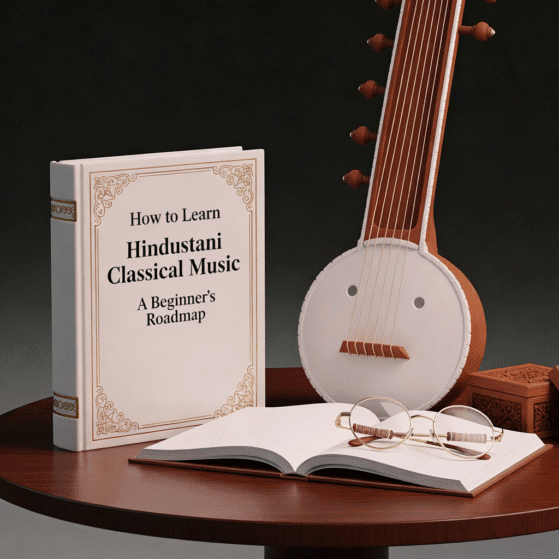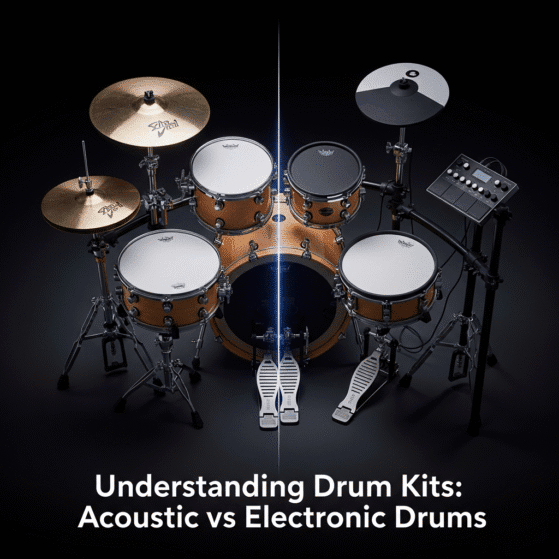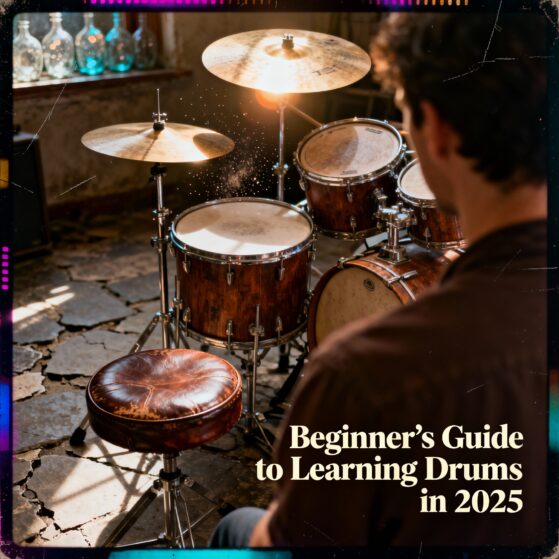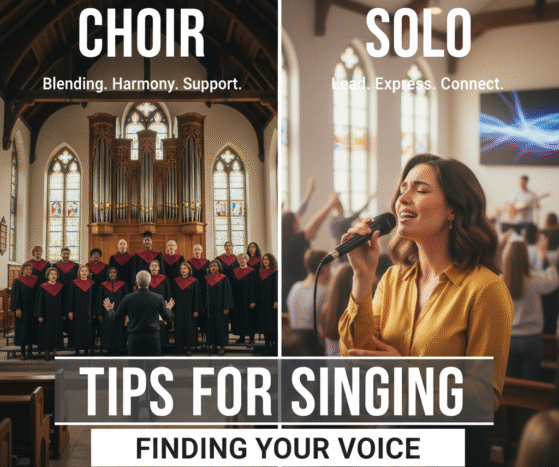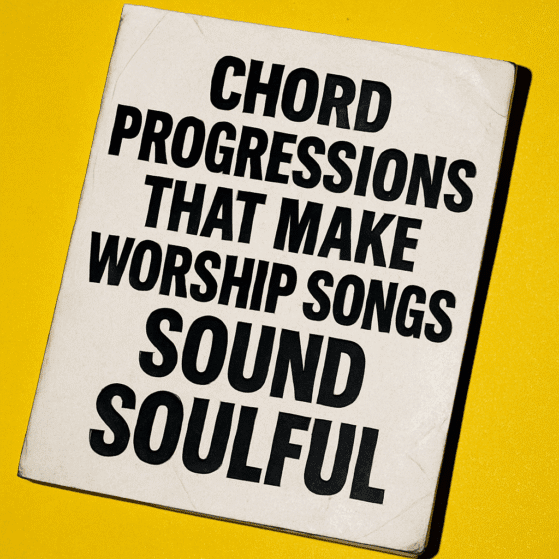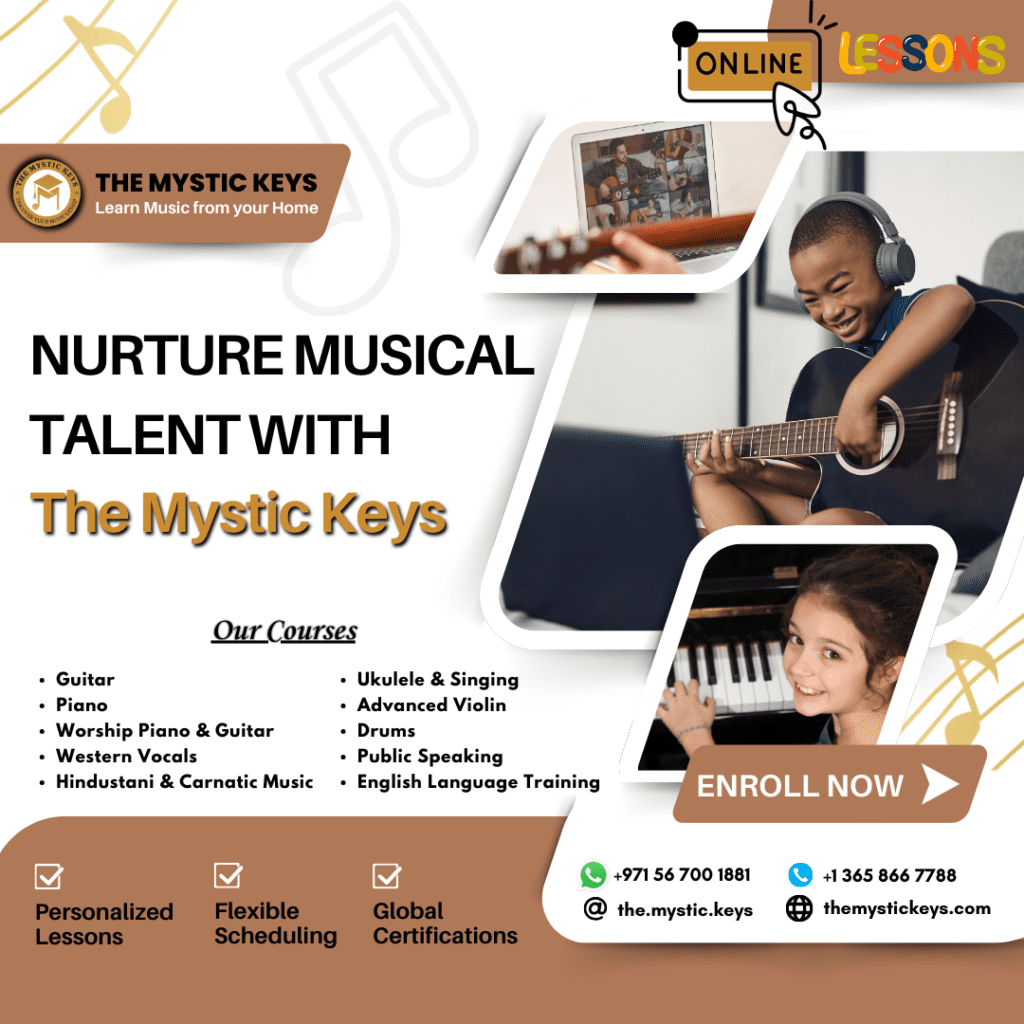The Changing Landscape of Music Education | Interactive Music Learning
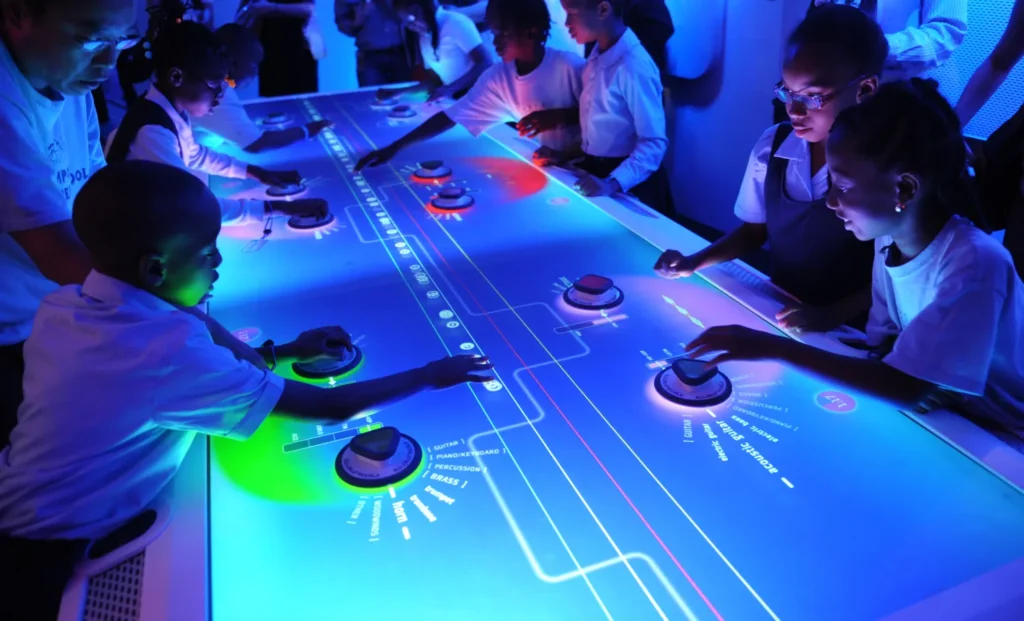
The world of education is rapidly evolving, with technology playing a central role in transforming how we learn. This transformation is particularly evident in the field of music education, where traditional methods of instruction are being enhanced, and in some cases replaced, by interactive music learning. Music has long been an important part of academic curriculums worldwide, but for many students, the traditional approach to music education felt static and disconnected from their everyday experiences.
With the rise of technology and the increasing use of digital tools, music learning has become more engaging, personalized, and effective than ever before. The introduction of interactive learning methods allows students to connect with music in ways that were once unimaginable. Today’s music education goes beyond just learning how to play an instrument or read sheet music. It has become an exploration of creativity, collaboration, and instant feedback, made possible through digital platforms, music apps, and even virtual instruments.
In this article, we will explore why students are so drawn to interactive music learning and how it offers numerous benefits compared to traditional methods. Through real-time feedback, gamified lessons, and a highly personalized approach, interactive music learning is helping students build essential skills while making music education more enjoyable and accessible.
What is Interactive Music Learning?
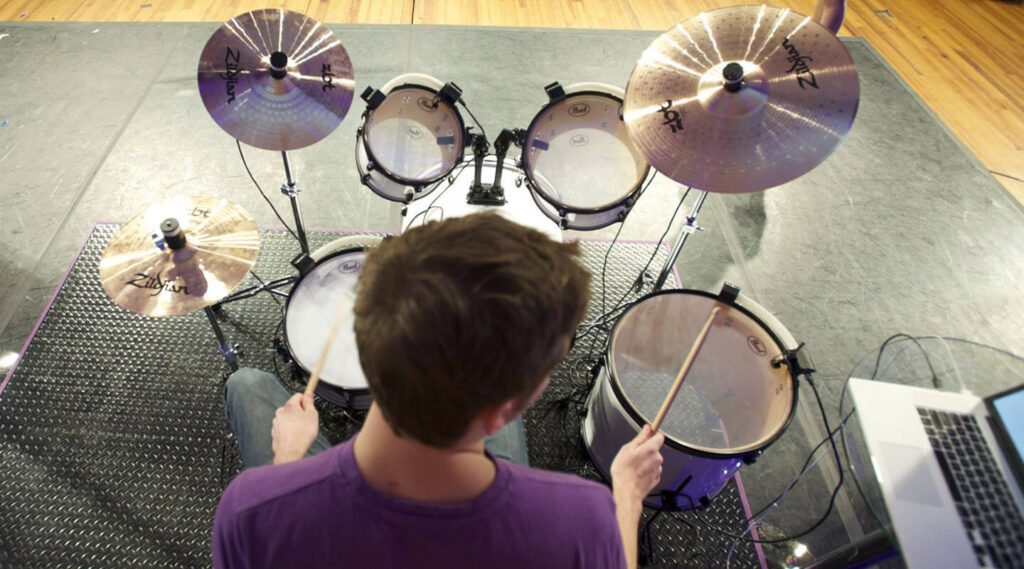
Interactive music learning is a modern approach to music education that uses technology, multimedia, and collaborative exercises to engage students in a hands-on learning process. Unlike the traditional, teacher-centered model, this method is designed to make the student an active participant in their own learning experience. The essence of interactive music learning is its focus on engaging students directly with the content, using digital tools and platforms to make the learning process more dynamic and enjoyable.
At its core, interactive music learning incorporates a variety of technologies and platforms, such as music software, mobile apps, online lessons, and virtual instruments, to deliver lessons that are both accessible and immersive. These tools provide students with instant feedback, enabling them to learn at their own pace and make adjustments based on real-time responses. Whether it’s through learning how to play an instrument, mastering music theory, or composing original pieces, interactive learning offers a more personalized and tailored approach that meets the diverse needs of students.
The Role of Technology in Music Learning
One of the defining characteristics of interactive music learning is the integration of technology. Digital tools like music production software, virtual instruments, and online classes have revolutionized how students learn music, offering flexibility and a richer educational experience. These tools provide an accessible platform for students to engage with music in a way that traditional classroom methods simply cannot match.
Music Software
Tools like GarageBand, Ableton Live, or Logic Pro, allow students to compose, arrange, and produce their own music. These platforms offer an intuitive interface for students to create their own soundscapes, experimenting with different instruments and genres. Through this hands-on approach, students develop a deeper understanding of music composition and production, going beyond what is taught in traditional lessons.
Mobile Music Apps
With apps like Yousician, Simply Piano and Flowkey, students can learn how to play instruments such as the piano, guitar, and violin, right from their smartphones. These apps use gamification techniques to make learning more fun and rewarding, offering students immediate feedback and a structured curriculum. This not only helps students improve their skills but also keeps them motivated by tracking their progress.
Virtual Instruments
Virtual instruments, such as digital pianos or synthesizers, offer students the opportunity to experiment with different sounds without the need for expensive equipment. These instruments are often integrated into online platforms that guide students through lessons in a fun and interactive way. Whether a student is learning basic chords or creating complex compositions, virtual instruments offer an excellent starting point for learning music in a non-traditional, yet highly effective, manner.
The combination of these digital tools has made interactive music learning not only accessible to students but also highly adaptable to different learning styles and preferences. The ability to learn music anytime and anywhere, paired with a wide range of resources, ensures that students can continually grow and explore music in a way that fits their individual needs.
The Benefits of Interactive Music Learning
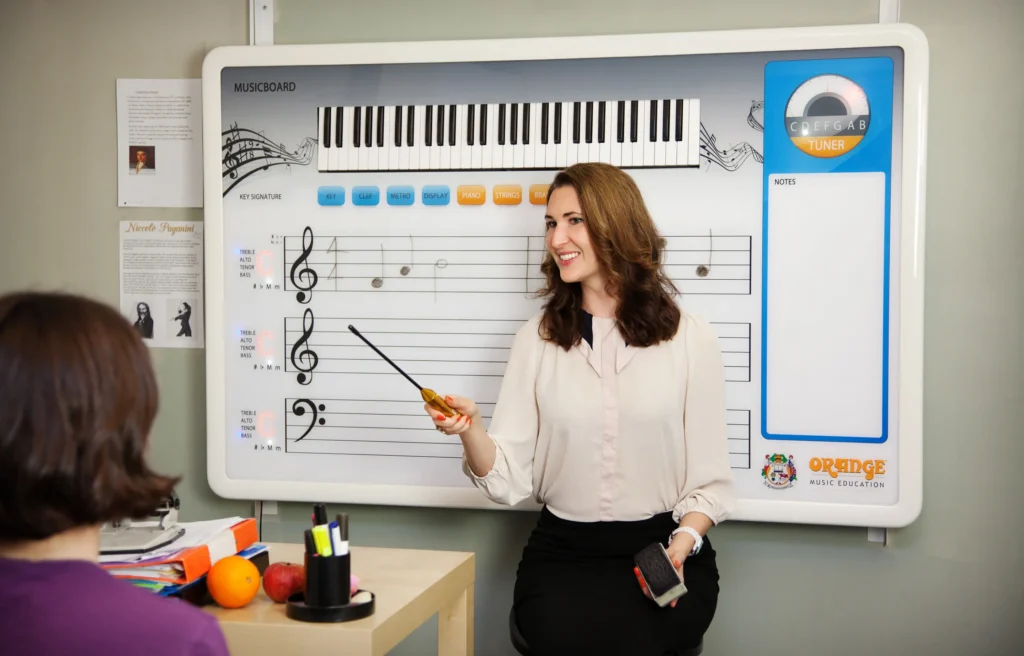
Interactive music learning offers a wide array of benefits that traditional music education simply cannot match. This approach not only enhances students’ technical musical skills but also nurtures their creativity, problem-solving abilities, and emotional intelligence. In this section, we’ll explore the key advantages of adopting an interactive approach to music learning.
Personalized Learning Experience
One of the most significant benefits of interactive music learning is its ability to provide a personalized learning experience. Unlike the traditional one-size-fits-all approach, interactive platforms allow students to learn at their own pace, giving them the opportunity to progress based on their individual needs. Whether a student is a beginner or an advanced learner, the ability to adjust lessons according to their skill level helps foster a sense of accomplishment and motivation.
Interactive tools provide immediate feedback, enabling students to make corrections and learn from their mistakes instantly. For instance, when using a music learning app like Yousician, students receive real-time guidance on their performance. If they miss a note or play out of time, the app alerts them and allows them to practice that specific section until they master it. This personalized approach accelerates learning and helps students improve faster.
Increased Engagement and Motivation
Traditional music lessons can sometimes feel repetitive and monotonous, especially for younger students or beginners. Interactive music learning, on the other hand, is inherently engaging. By incorporating elements of gamification, technology, and multimedia, interactive learning makes the experience more enjoyable and rewarding. This leads to higher levels of student engagement and motivation.
For example, many interactive platforms use achievement systems, where students earn rewards, badges, or points as they progress through lessons. These rewards serve as positive reinforcement, encouraging students to keep practicing and improving. The element of competition, such as aiming to beat your own high score or complete a difficult challenge, keeps students excited about their learning journey.
Moreover, these tools often feature a diverse array of music genres, styles, and activities, ensuring that students never get bored. They can explore classical, jazz, pop, and contemporary music while learning fundamental skills or advanced techniques. The variety ensures that students remain motivated to continue their musical exploration.
Collaboration and Social Learning Opportunities
Another unique advantage of interactive music learning is the opportunity for collaboration and social learning. Traditional music education is often an individual pursuit, but interactive learning platforms foster collaboration. With the rise of online communities, students can easily interact with others who share their musical interests.
In virtual lessons, students can collaborate with peers in live jam sessions, group projects, or even virtual performances. Apps like Soundtrap and BandLab allow students to create and collaborate on songs remotely, providing a platform for teamwork and creative expression. This sense of community not only builds confidence but also helps students learn how to work in teams, a skill that is invaluable both in music and in life.
Access to a Wealth of Resources
Interactive music learning provides access to an extensive library of resources that traditional classrooms may not be able to offer. Students can access high-quality lessons, tutorials, sheet music, and even videos from world-renowned musicians. This vast collection of resources allows students to tailor their learning experience to their personal interests and areas they want to improve upon.
For example, YouTube tutorials or online masterclasses from famous artists provide insights and knowledge that students can’t always get in a traditional classroom setting. With the ability to watch performances, break down techniques, and access a wide range of musical styles, students are empowered to take their learning into their own hands. The diversity and volume of materials available ensure that students can deepen their knowledge and skills at their own pace.
How Music Learning Supports Skill Development
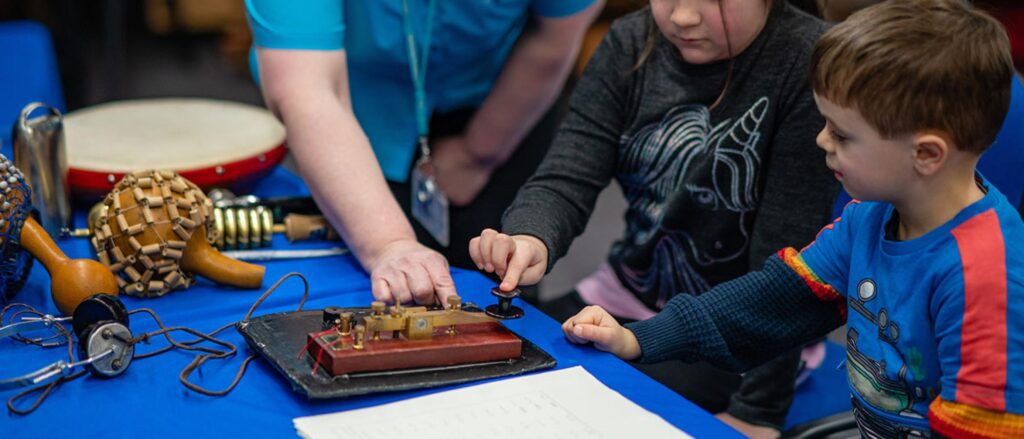
Interactive music learning is not just about playing an instrument—it’s about developing a broad range of skills that are crucial in music and beyond. From cognitive and motor skills to emotional and social intelligence, interactive music learning plays a pivotal role in nurturing a well-rounded set of abilities.
Enhances Cognitive Skills
One of the key ways in which interactive music learning supports skill development is by enhancing cognitive abilities. Learning music requires a high degree of mental processing, and engaging with music through interactive platforms helps develop a range of cognitive skills, such as memory, attention, and problem-solving.
For instance, when students play music, they not only have to recall the notes and rhythms but also need to pay attention to the timing, dynamics, and expression. Interactive platforms challenge students to multitask in real-time, enhancing their cognitive flexibility and memory retention. The act of reading sheet music and converting it into movement further strengthens cognitive abilities, improving overall brain function.
Moreover, many music apps and software tools incorporate memory games and exercises, which help strengthen the brain’s ability to recall musical patterns and sequences. The repetitive practice of playing scales or melodies in an interactive format also encourages muscle memory, enabling students to improve their playing over time.
Fosters Emotional Expression
Music is often referred to as a language of emotions, and interactive music learning provides an excellent avenue for emotional expression. Through music, students can explore a wide range of emotions, from joy and excitement to sadness and introspection. Interactive tools allow students to create and perform music that resonates with their personal emotions, giving them an outlet for self-expression.
As students learn to interpret and perform music, they not only refine their technical skills but also develop emotional intelligence. Understanding how to convey emotion through music, whether it’s through tempo, dynamics, or phrasing, helps students gain a deeper understanding of their own emotions and the emotions of others.
Develops Critical Thinking and Problem-Solving Abilities
Interactive music learning often involves challenges, puzzles, and problem-solving scenarios. For example, in many apps and software, students must solve musical puzzles, complete rhythm exercises, or figure out how to play a song with limited resources. These challenges require critical thinking, perseverance, and creativity.
Through these problem-solving exercises, students enhance their ability to think analytically and creatively. They learn to approach challenges with an open mind and develop strategies to overcome obstacles. These critical thinking skills can be transferred to other areas of life, making interactive music learning an excellent tool for personal growth.
The Future of Interactive Music Learning
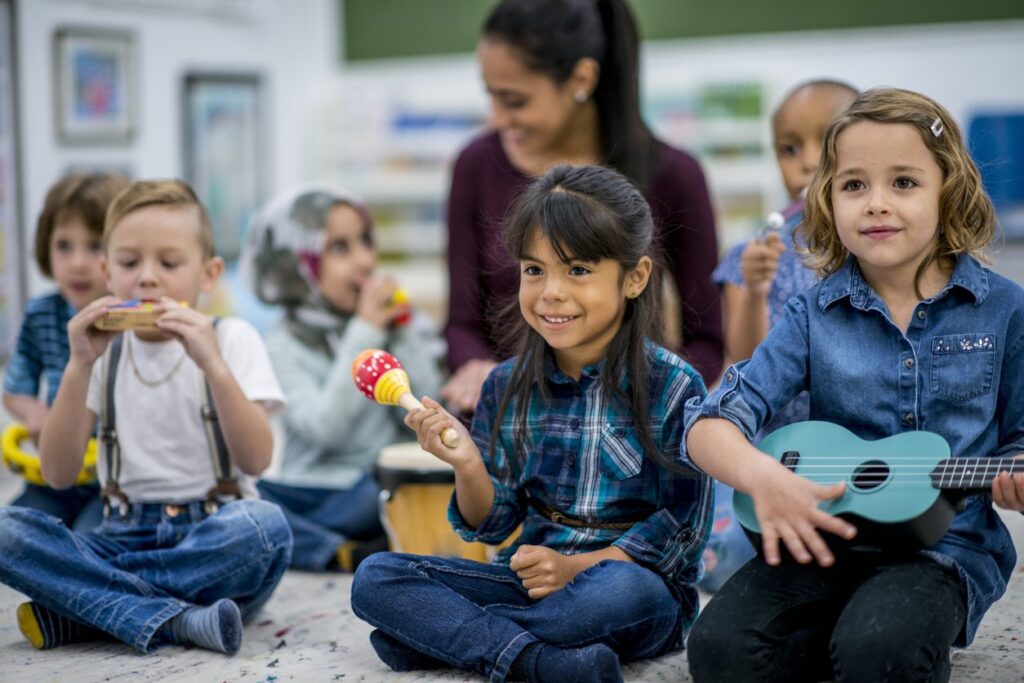
As technology continues to advance, the possibilities for interactive music learning seem endless. In this section, we will explore what the future holds for music education and how advancements in technology will continue to shape and redefine the learning process.
Integration of Artificial Intelligence (AI)
One of the most exciting developments on the horizon for interactive music learning is the integration of artificial intelligence (AI). AI has the potential to revolutionize the way music is taught and learned by providing personalized feedback, tracking progress, and adapting lessons to each student’s needs.
AI-powered music platforms can analyze a student’s performance in real time and provide tailored suggestions for improvement. For example, if a student struggles with rhythm, an AI system might offer extra exercises focusing specifically on that area. AI can also track a student’s progress over time, ensuring that they are challenged appropriately and that no skill is left behind.
Moreover, AI could also be used to generate personalized compositions or improvisation prompts for students, allowing them to explore music creation in a whole new way. The integration of AI will make interactive music learning more adaptive, efficient, and engaging.
Virtual Reality (VR) and Augmented Reality (AR) in Music Education
Virtual reality (VR) and augmented reality (AR) are two emerging technologies that are beginning to impact music education. In the near future, VR and AR may offer immersive experiences that allow students to practice their instruments or explore music in a completely new environment.
For example, VR could create virtual concert halls where students can perform in front of a virtual audience, providing them with a sense of what it’s like to perform live. AR could overlay visual guides or instructions on a student’s instrument, helping them visualize finger placements, scales, or chords in real-time. These immersive experiences will enhance the hands-on nature of interactive music learning, making it even more engaging and effective.
Global Connectivity and Collaboration
The future of interactive music learning will also see a rise in global connectivity, allowing students to collaborate and learn from others across the world. Platforms like online music communities, virtual masterclasses, and global jam sessions will provide students with unprecedented opportunities to connect with other musicians and educators.
Students will no longer be confined to their local communities—they will be able to interact, share, and collaborate with other musicians globally. This enhanced connectivity will further enrich the learning experience and create a more diverse and inclusive music education environment.
The Role of Technology
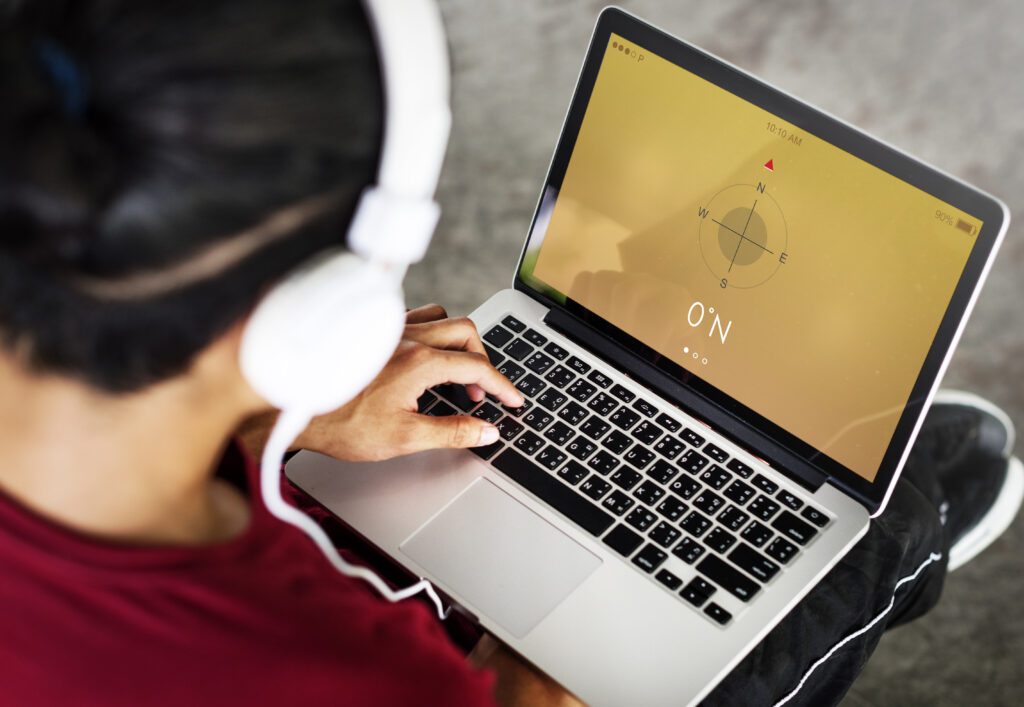
Technology plays a crucial role in transforming music education, making learning more accessible, engaging, and effective. The rapid advancement of technology has paved the way for interactive music learning tools that integrate audio, visual, and real-time feedback to cater to the unique needs of each student. In this section, we’ll explore how various technological innovations have enhanced music education and the role they play in improving learning outcomes.
Music Learning Apps and Software
Music learning apps have become a staple in the world of interactive music learning. These apps, available on multiple devices, provide a wide range of learning opportunities that can be customized to suit the needs of individual students. Some popular apps, such as Simply Piano, GuitarTuna, and Melodics, offer interactive lessons where students can learn an instrument at their own pace. These apps include visual aids, interactive exercises, and personalized feedback, ensuring students receive the right level of challenge based on their skills.
For instance, Simply Piano is designed for beginners, guiding users step-by-step through piano lessons, while Melodics focuses on keyboard and percussion skills with a game-like experience. These applications provide visual cues, play-along features, and immediate feedback, making it easier for students to identify mistakes and improve their performance.
Online Courses and Virtual Classes
In addition to apps, online courses and virtual classes have opened up new avenues for interactive music learning. Through platform like The Mystic Keys students can take in-depth courses taught by world-renowned musicians, educators, and industry experts. This platform include video lectures, assignments, and real-time feedback, offering an immersive learning experience.
The virtual classroom setting encourages student interaction, allowing them to engage with their peers through discussions, group projects, and collaborations. The flexibility of online learning enables students to study from the comfort of their homes, at their own pace, while receiving expert guidance.
Real-Time Feedback and Adaptive Learning Technologies
Real-time feedback is one of the most powerful features of interactive music learning platforms. Many of the most popular learning tools provide instant feedback on students’ performance. This could include visual indicators that highlight correct or incorrect notes, tempo accuracy, and rhythm, helping students make immediate corrections and learn more effectively.
Moreover, adaptive learning technologies take this feedback even further by adjusting the difficulty level of lessons based on a student’s progress. If a student struggles with a particular concept, the platform will offer more targeted exercises or revisits to reinforce that skill. Conversely, if the student excels, the lessons will increase in complexity, keeping them engaged and challenged.
The Power of Artificial Intelligence (AI) and Machine Learning
AI and machine learning are starting to play a significant role in interactive music learning. These technologies can analyze students’ playing patterns, track their progress, and provide highly personalized lessons. For example, AI-powered tools can listen to a student’s performance and offer suggestions for improvement, adjusting the lesson plan based on the individual’s pace and needs.
Through machine learning algorithms, the system can recognize musical nuances such as tone quality, rhythm, and pitch, providing detailed feedback that helps students refine their skills. Additionally, AI can even generate music, allowing students to create compositions alongside their learning.
How Interactive Music Learning Benefits Different Age Groups
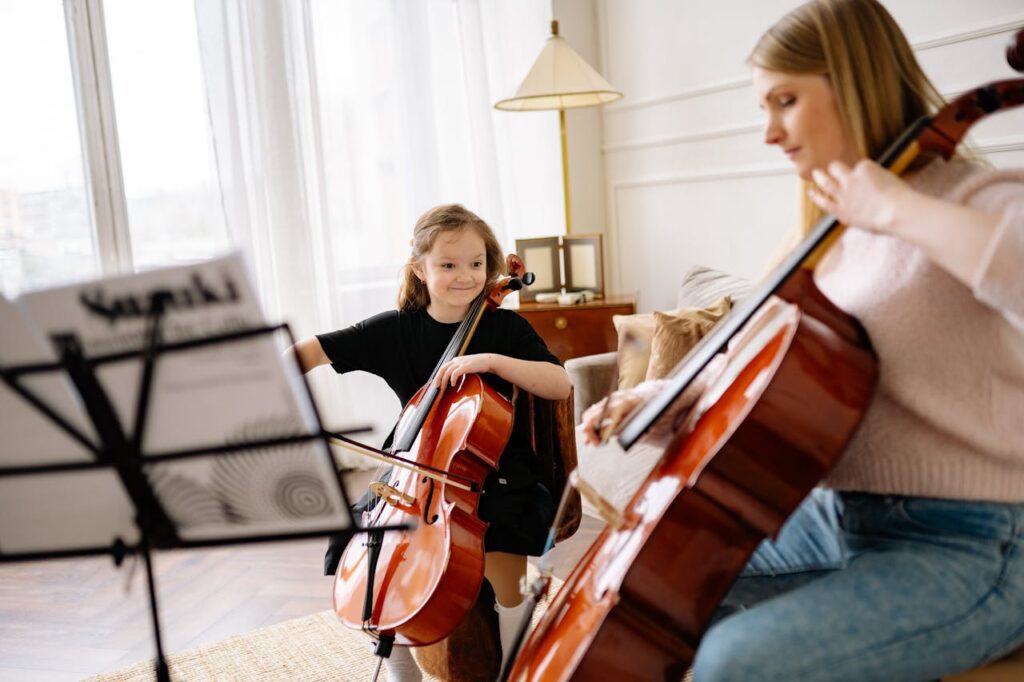
Interactive music learning is not limited to one specific age group—it offers benefits to learners of all ages, from young children to adults. In this section, we will discuss how this form of learning can be tailored to different age groups and the unique advantages each group can experience.
Music Learning for Children
For children, interactive music learning makes the process of learning music fun and engaging. Traditional music education methods can sometimes be daunting or boring for young learners, but interactive tools incorporate colorful visuals, games, and quizzes that make the learning experience enjoyable.
Interactive platforms often feature age-appropriate songs and challenges that help children build fundamental music skills while also engaging their imagination. Apps like KidzMusic or RhythmLab use animations and storylines to teach children the basics of rhythm, melody, and music theory in a playful manner.
Additionally, children tend to develop their motor skills more effectively when engaging in interactive music learning because of the coordinated hand-eye movements required when following visual cues or playing along with tracks. This aspect of interactive learning also enhances cognitive skills like memory and concentration.
Interactive Music Learning for Teens and Young Adults
Teens and young adults often crave more autonomy in their learning process. Interactive music learning is ideal for this age group because it gives them the freedom to explore music at their own pace while still offering structure and feedback.
This age group tends to have access to more advanced software, such as GarageBand, Ableton Live, or Logic Pro, which allows them to create, remix, and produce music. These platforms provide a creative outlet for self-expression and give students the opportunity to experiment with different genres and styles, which is critical at this stage of development.
For teens who are interested in pursuing a career in music, interactive learning tools provide the necessary resources to develop a portfolio of original work. The ability to collaborate with others through online platforms further enriches their learning experience, giving them real-world experience working on projects.
Interactive Music Learning for Adults
For adults, interactive music learning provides an excellent opportunity to pursue music as a hobby or a career. Many adults who start learning music later in life find traditional learning methods difficult to stick with, but interactive platforms offer a more flexible and rewarding experience.
Adults can learn to play instruments like the guitar, piano, or drums from the comfort of their own homes using apps and online resources. Additionally, many adults enjoy the convenience of self-paced learning, which allows them to fit music practice around their busy schedules. Interactive music learning for adults also provides opportunities for lifelong learning and growth, whether they’re learning for personal enjoyment or as part of a professional development plan.
Addressing Common Challenges
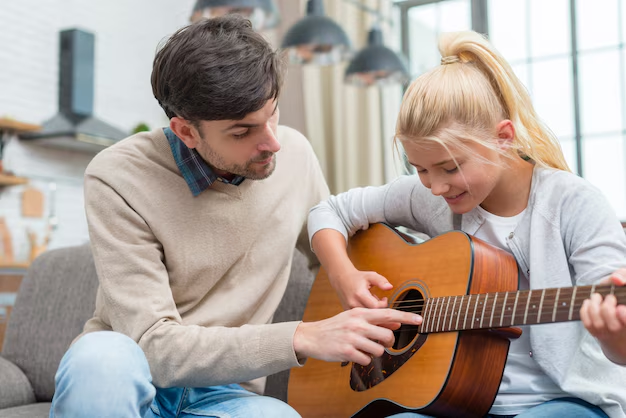
While interactive music learning offers numerous benefits, it’s important to acknowledge that there are some challenges associated with this method. In this section, we will discuss some of the most common issues students may face with interactive learning and how to overcome them.
Technology Barriers and Accessibility
One of the most common challenges with interactive music learning is access to the necessary technology. Some students may not have access to high-quality devices, such as smartphones, tablets, or computers, that are required to fully engage with interactive learning tools. This issue can create inequality, limiting opportunities for those in lower-income households or areas with limited access to technology.
To address this, many interactive music learning platforms are now available on a variety of devices, from smartphones to desktop computers, and offer low-cost or even free versions for students who can’t afford premium services. Schools and community centers also have a role to play by providing access to technology for students who need it.
Over-reliance on Technology
Another potential drawback of interactive music learning is the over-reliance on technology. While digital tools and apps are incredibly helpful, they cannot replace the value of hands-on instruction from experienced teachers. There is also a risk that students might become too focused on using technology to the detriment of their interpersonal and collaborative learning experiences.
To overcome this, it’s important for students to balance their interactive learning with in-person lessons, group practices, and live performances. The combination of digital and traditional learning methods offers the best of both worlds, ensuring that students don’t miss out on crucial social and performance skills.
This is where The Mystic Keys comes into the picture. Here you get an amazing style of Interactive Music Learning experience in a one-on-one structure. This creates the perfect balance between the use of technology and flawless communication between the teacher and the student.
Maintaining Motivation and Focus
While interactive music learning can be highly engaging, students may still experience moments where they lose motivation or get distracted. With the endless options available on digital platforms, it’s easy for students to wander off task or give up when they encounter difficulties.
To address this, many platforms incorporate gamification, goal-setting features, and rewards systems to keep students motivated. These tools encourage students to stay focused on their goals and track their progress. Additionally, establishing a routine and setting specific learning objectives can help students maintain focus and stay committed to their practice.
Embracing the Future | Innovations Shaping Interactive Music Learning

As technology continues to advance, the future of interactive music learning is filled with exciting possibilities. Innovations in artificial intelligence, virtual reality, and interactive media promise to redefine how students learn music. In this section, we’ll explore what the future holds for interactive music learning, the trends shaping its evolution, and the potential impact on music education worldwide.
Artificial Intelligence and Personalized Learning Experiences
One of the most promising developments in interactive music learning is the integration of artificial intelligence (AI). AI technologies are already playing a significant role in customizing learning experiences for students, and as AI continues to evolve, its impact on music education will only grow.
In the future, AI-powered platforms will be able to analyze a student’s progress in real-time and adapt lessons accordingly. Whether a student needs more practice with scales, rhythm, or improvisation, the platform will automatically adjust to provide the most effective learning path. This level of personalized learning ensures that no student falls behind and allows for a deeper, more focused approach to music education.
AI can also play a crucial role in real-time feedback. Imagine playing an instrument and receiving instant suggestions on how to improve your technique or performance—this is already happening through some advanced tools, and it will only become more refined. Students will have access to a virtual instructor who can evaluate their performance, pinpoint areas for improvement, and suggest corrective actions without requiring human intervention.
Virtual Reality (VR) and Augmented Reality (AR) Integration
Virtual reality (VR) and augmented reality (AR) have the potential to revolutionize interactive music learning. With VR, students can immerse themselves in a 3D environment where they can interact with instruments, participate in virtual ensembles, or experience live performances from the comfort of their home. AR, on the other hand, overlays digital content on the physical world, enhancing the learning experience with real-time visual aids, interactive tutorials, and even virtual performances.
Imagine being able to stand on a virtual stage and perform with other musicians in a simulated environment. Students could practice their instruments alongside virtual bandmates, receive immediate feedback on their playing, and even perform in front of a virtual audience. This experience would not only enhance technical skills but also foster important performance confidence and stage presence.
These immersive technologies offer exciting new ways to engage students and teach complex musical concepts in an accessible and engaging manner. As VR and AR technologies continue to improve, we can expect to see even more innovative applications in music education.
Collaborative Music Learning Across Borders
In the future, interactive music learning will enable students to collaborate across borders, forming virtual bands and ensembles with musicians from different parts of the world. The global nature of the internet, coupled with advancements in real-time collaboration tools, will allow musicians to play together without ever having to meet in person.
For example, students could engage in joint practice sessions, attend virtual jam sessions, or participate in online competitions that bring together performers from diverse cultures. This aspect of music education fosters a sense of global community and cross-cultural understanding, providing students with invaluable opportunities to learn from peers around the world.
Moreover, this global connectivity allows for the exchange of musical ideas and techniques that are unique to different regions. Students can learn new instruments, styles, and genres that they may not have had access to otherwise, broadening their musical knowledge and enhancing their appreciation for diverse musical traditions.
Enhanced Gamification and Learning through Play
The future of interactive music learning is likely to involve even more advanced gamification techniques. While gamified platforms already provide students with rewards, challenges, and progress tracking, there’s potential for further development in this area.
Imagine music lessons that feel like a video game, where students embark on quests, complete challenges, and level up their musical skills as they progress. This type of gamified experience would keep students engaged, motivated, and invested in their learning journey. By making learning fun and competitive, students will be more likely to stick with their practice and achieve their goals.
For example, a student might enter a game where they must use their musical knowledge to solve puzzles, create compositions, or battle in rhythm-based challenges. These game elements could incorporate music theory, note recognition, ear training, and more, making the learning process interactive and enjoyable.
Integration with Social Media and Music Platforms
Another exciting development is the integration of interactive music learning with social media and music streaming platforms. Social platforms like YouTube, Instagram, and TikTok already allow musicians to share their performances, tutorials, and compositions with a global audience. As interactive learning platforms continue to evolve, we can expect a deeper integration with these platforms, allowing students to share their progress, receive feedback, and connect with a wider music community.
This integration can create a more social, community-driven learning environment, where students not only engage with their own practice but also exchange ideas with other learners and instructors. For example, students might post their performances on social media to receive feedback from their peers, or they could collaborate on projects with musicians they meet through online communities. This kind of connectivity fosters a sense of belonging and encourages students to continue pursuing their musical passions.
Furthermore, platforms like Spotify and SoundCloud could feature curated playlists or virtual music classes that allow students to learn and perform alongside professional musicians, providing them with a glimpse into the music industry and practical exposure to working as a musician.
The Democratization of Music Education
One of the most significant advantages of interactive music learning is its ability to democratize music education, making it accessible to everyone, regardless of their location, background, or financial resources. Traditional music education, particularly private lessons, can be expensive and geographically limiting. In contrast, interactive music learning tools, online courses, and mobile apps are often affordable and available to anyone with an internet connection.
As technology becomes more affordable and widespread, interactive music learning has the potential to provide quality music education to underserved communities, allowing more people the opportunity to explore their musical talents. This democratization of learning means that anyone—whether they live in a remote area or come from a low-income family—can access the tools and resources needed to learn and excel in music.
Furthermore, online communities and virtual classrooms break down barriers to access, offering students from different cultures and backgrounds a space to learn together and exchange ideas. As the global music community becomes more connected, the boundaries of traditional music education will continue to fade, allowing for a more inclusive and diverse music education system.
A Bright Future for Interactive Music Learning
The future of interactive music learning is incredibly bright, with endless possibilities for growth and innovation. As technology continues to advance, so too will the tools and resources available to music students, providing them with more personalized, immersive, and engaging learning experiences. From AI-powered platforms to virtual reality, gamification, and global collaboration, the potential to reshape music education is limitless.
With these advancements, students of all ages and backgrounds will have greater access to high-quality music education, breaking down traditional barriers and opening doors for creativity, self-expression, and global collaboration. The world of music is becoming more interconnected, and interactive music learning is leading the charge in transforming how we learn, create, and experience music.
As we look ahead, the future of music education holds great promise, one where technology, creativity, and passion come together to inspire and empower the next generation of musicians.
For more information and exciting resources about learning music, visit our website at The Mystic Keys. For more music content and exciting offers follow us on
Facebook, Instagram, YouTube, LinkedIn, Twitter, Pinterest, Reddit, Threads, and Quora.


